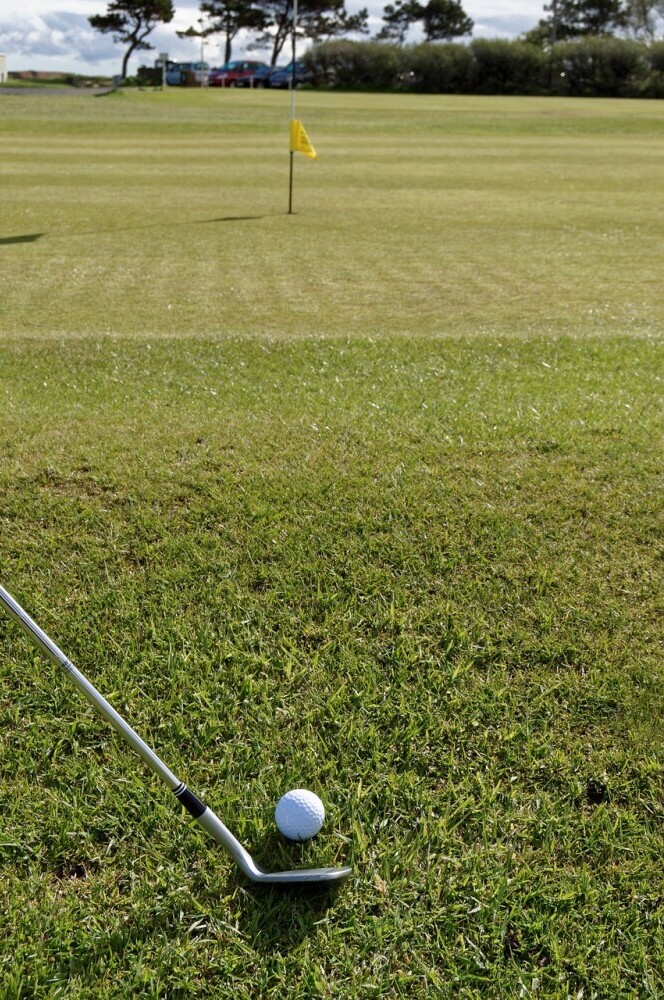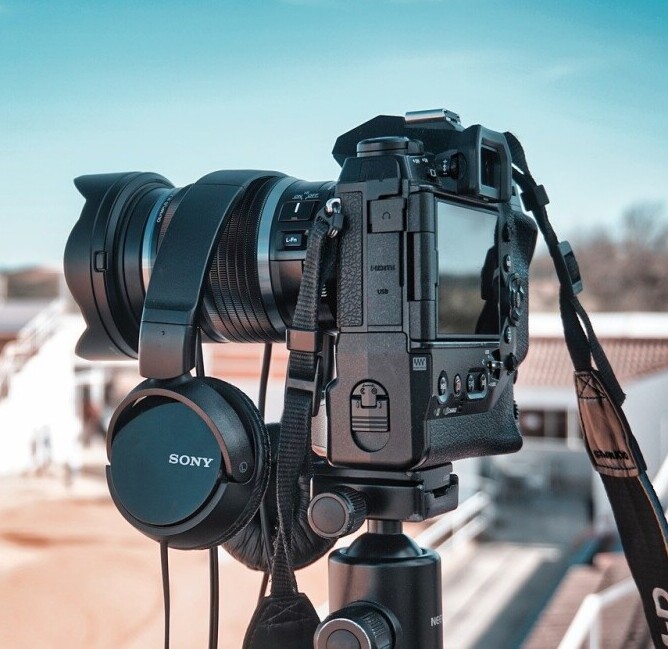Best Tips For Controlling Distance In Your Chips In Golf


Fore! Quick note: a few links here are affiliate links. If you snag gear through them, I earn a small commission — no extra strokes added to your game.
Chipping is one of those aspects of golf that sneaks up on you. You think you’ve got your game all dialed in, until you’re either fluffing it right into a bunker or launching it over the green. Annoying, right? So why is getting that chipping distance just right such a big deal? Gather round folks, because the golf viking is about to lay down some more golf wisdom.
Controlling your chipping distance isn’t just for show—it’s a game-changer. If you can get your ball to nestle comfortably on the green rather than doing the back-and-forth between the rough and the bunkers, you’re saving shots. Dropping that score? Yeah, it has a lot to do with how well you can manage these tricky little shots.
Now, let’s talk common challenges. We’ve all been there: either hitting too soft and the ball barely gets out of its cozy grass nest, or smacking it so hard we’re retrieving it from a neighboring green. Mastering chipping doesn’t happen overnight, but once you start dialing in the distance, your confidence out on the course skyrockets.
Think of those moments when you need to get the ball on the green—maybe there’s a bunker in the way or you’re dealing with a tough lie. That’s where perfecting your chipping distance comes into play. Control it, and you suddenly make these frustrating situations work in your favor.
Every golfer has struggled with chipping at some point, so don’t beat yourself up over it. Recognize that getting this part of your game under control opens up new possibilities for dropping strokes and gaining a competitive edge. So how to we perform a perfect chip shot?
Dialing in distance control starts with sound fundamentals. Check out Short Game Mastery for step-by-step techniques to refine your chipping touch.

The Mechanics of a Golf Swing for Chipping
Getting the basics right is crucial for chipping success. Let’s break it down so you know what’s what when you step up to your ball. Get the handle on this and you will be able to get your ball onto the green in less strokes and give yourself an easy putt.
Start with the grip. You don’t want a death grip, but more of a firm handshake. A relaxed grip will help you keep good touch and feel. This is where those little finesse shots start to come together. Practice having a good grip throughout the entire swing.
Stance is another biggie. Keep your feet close, maybe shoulder-width apart, and stand a bit open to your target. This helps you work through the ball smoothly because who wants a herky-jerky motion in their play?
Now, alignment. Picture your feet, hips, and shoulders pointing where you want that ball to go. It might seem obvious, but proper alignment is like laying the tracks before the train rolls: get this right, and everything else is easier. Without proper alignment you won’t hit the ball in the direction you want it to go.
Body rotation and weight. Think of your legs and hips as the anchor. As you swing the club back, your weight should be mostly on your lead foot, around 60%. Keep it there as you swing through. This stability is key in controlling shots and avoiding mishits. Having a good rhythm as you rotate your body throughout your swing will be crucial.
Of course, everyone trips up sometimes. Common mistakes include overturning your body or relying too much on arm strength. Try to swing with your core muscles for more controlled power. This tweak can work wonders for your distance control. There shouldn’t be too much arm motion in your swing.
Stick to a consistent motion. Make sure each swing, no matter how short, is deliberate and precise. It’s about rhythm and flow. Just remember: practice the fundamentals regularly and they’ll pay off in consistency and control. Let’s get into how to judge our chips.
The right equipment can improve feel and accuracy around the greens. Learn more in Best Golf Clubs for Backspin to choose wedges that suit your chipping style.

Techniques for Chipping at the Right Distance
Judging the distance for a chip might feel like a puzzle, but with the right techniques, it becomes more manageable. It’s all about visualizing where you want the ball to land, then letting your body and swing bring that picture to life. With the proper mechanics listed above, you can begin to chip the ball where you want to.
One trick is to focus on landing spots rather than the hole itself. Pick a spot where you want the ball to touch down. That little patch of green becomes your target—not the flag. This approach shifts your mindset to control and precision. The more you practice this you can improve your accuracy on your chip shots.
To get that dialed in touch, work on exercises that develop feel. Spend time at the range hitting chips where all you think about is the distance. Try out a few with your eyes closed. You’d be surprised how this improves your instincts and helps fine-tune your touch.
Different chip shots require different attention, especially when it comes to turf and lie. Alter your swing slightly depending on whether you’re on an uphill, downhill, or level lie. Each tiny adjustment can change your distance by a good margin. You may need to alter your swing a little based on your lie and position on the ground.
Don’t forget about the variety of clubs you can use for chipping. A sand wedge gives a high flight and soft landing, while a nine iron could roll out more. Different clubs let you adjust the carry and roll, translating to better distance control. Just make sure that you are chipping with a club that has loft, otherwise you will line drive your ball straight past the green.
Practice is the magic word here. Spend time not just hitting chips but analyzing each one. Pretty soon, judging distance and getting that ball exactly where you want it becomes second nature, making a real difference out on the course. You will gain experience and then confidence.
Your mental approach plays a huge role in controlling distance. See How to Recover from a Bad Hole and Stay Focused for strategies to stay composed over pressure chips.

Perfecting Your Chipping Distance
Dialing in your chipping distance takes a blend of strategy and practice. It’s like piecing together a personal strategy to ace those awkward shots. Becoming more aware of the green’s conditions can be a game-changer. Whether it’s soft or firm, knowing how the ball will react upon landing gives you an upper hand.
Getting high-tech can also help. Launch monitors are an amazing resource if you have access to them. They give detailed feedback on your launch angles and even show how slight tweaks in technique impact your distance. It’s like having your own personal coach giving you insights that you might otherwise miss.
Drills are another fantastic way to sharpen your skills. One great exercise is the ladder drill where you set up targets at increasing distances. Several takes at this get you feeling comfortable with both short and longer chips. Repetition is your friend here, making it easier to find your groove in those real-world situations.
Don’t underestimate the power of perfecting distance either. A focused mindset during practice translates directly into solid performance when it counts on the course. Learn to clear distractions and really channel your efforts during every chip.
Tap into the wisdom of the pros, too. They’ve spent years fine-tuning their craft and often share insights that can provide a new perspective or approach. Emulating some of their strategies might just uncover the secrets your game needs.
Ultimately, mastering chipping distance boils down to understanding, practicing, and fine-tuning your approach. Keep exploring and improving, stepping closer to playing your best game every time. Every chip is an opportunity to play better.
Practicing with purpose is key for better distance control. Our Golf Training Aids and How to Use Them guide highlights tools that can help you master your chip shot touch.

Achieving the Best Distance Control for Chipping
Nailing down chipping distance isn’t just a skill; it’s an art. And it’s an art you can master with some patience and effort. Remember, keeping your cool when under pressure comes with a lot of practice and perseverance. Keep practicing your chips from various situations to give you a feel for how much you need to swing.
Think about setting small, achievable goals for yourself. Focus on improving your chipping even just a little each round, and those incremental gains will start adding up to substantial progress over time. You might find it helpful to record your practice sessions and compare your form and results periodically. This feedback is gold. It will help you figure out what you’re doing wrong so you will know what you need to fix.
Using tech like video analysis can highlight small issues—maybe you’re noticing your swing plane isn’t as steady as it could be. It’s these little notes that can lead to big improvements. Plus, seeing yourself on camera can speed up that adjustment period, because sometimes our perception differs from reality.
The journey to mastering chipping distance also involves learning from those who’ve paved the way. Pros often share their techniques for varying swings, distances, and conditions. Tap into their experiences to broaden your repertoire of skills. See how successful golfers approach their chip shots.
Most of all, keep the practice regular and fun. Approach it with enthusiasm and creativity. Try hitting different targets, playing mini chipping games, or competing with friends. Staying engaged makes practice less of a chore and more of an exciting part of your golf journey. I’ll see you out on the golf course, chipping gladiators.


